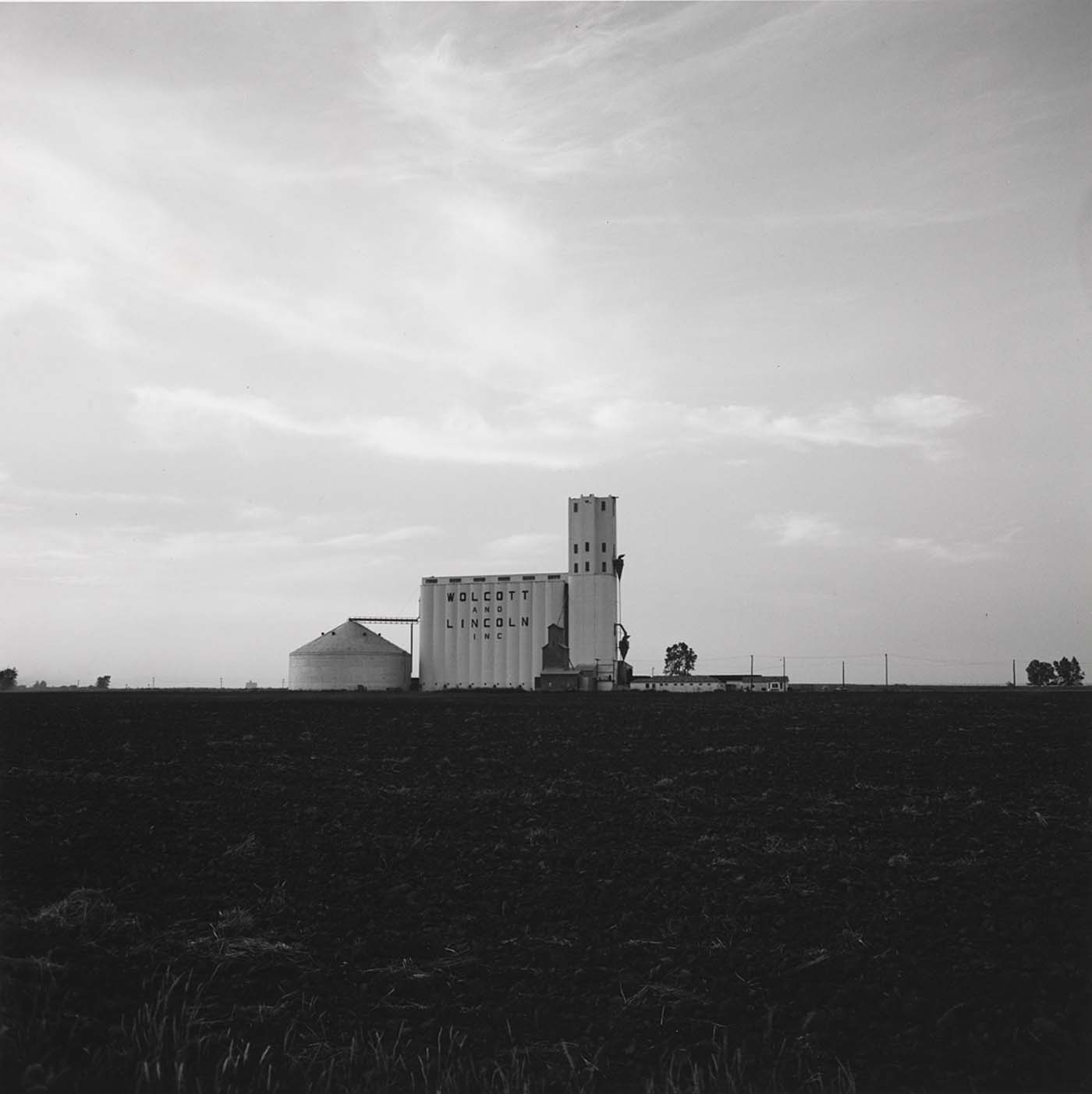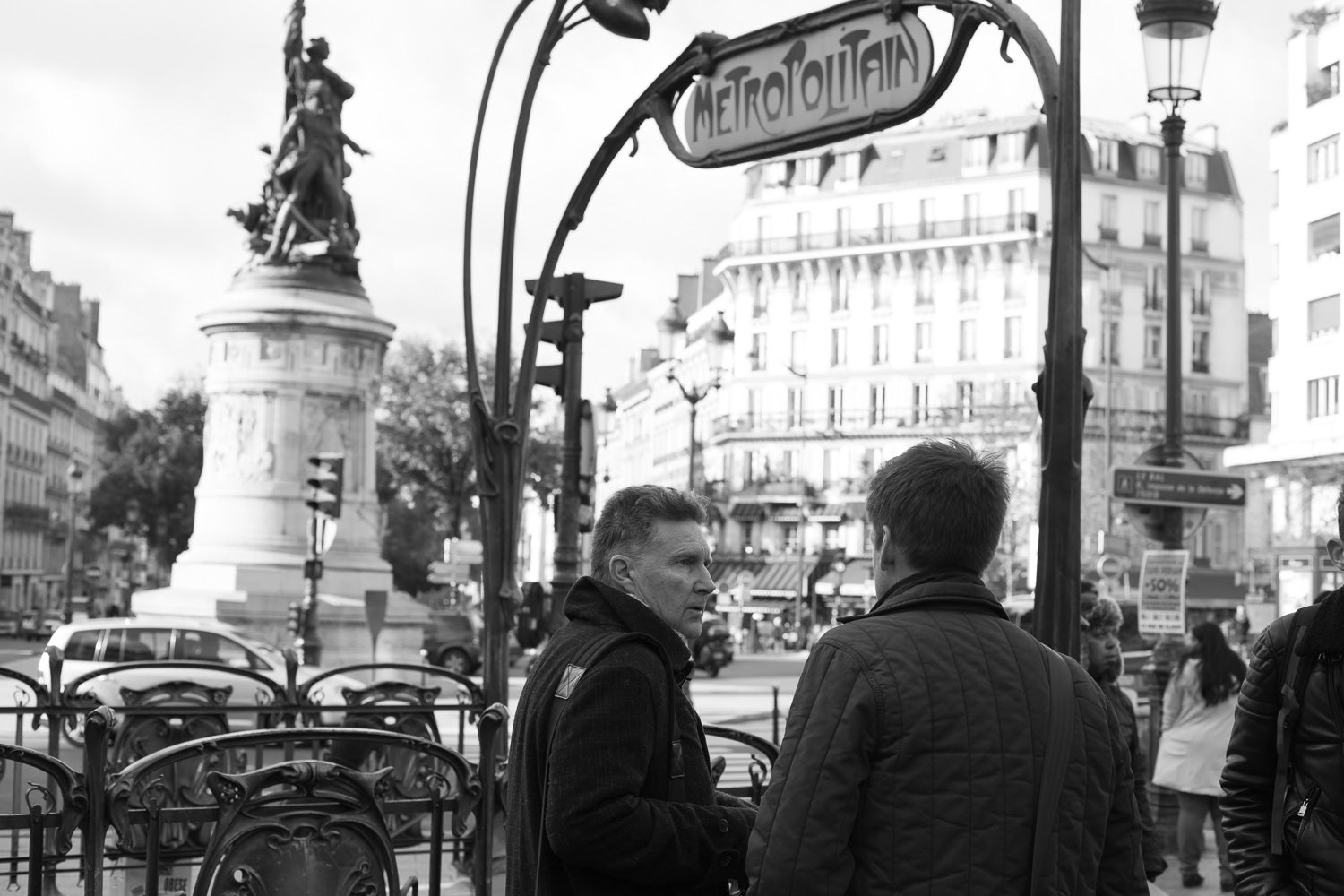Article: Falseness close to kin

Falseness close to kin
False flick
“You’re moved to write a poem, you feel called upon to sing, because of [a] transcendent impulse. But as soon as you move from the impulse to the actual poem, the song of the infinite is compromised by the finitude of its terms. In a dream your verses can defeat time, your words can shake off the history of their usage, you can represent what can’t be represented . . . but when you awake . . . you’re back in the human world with its inflexible laws and logic.”
That’s Ben Lerner from his short and valuable book The Hatred of Poetry. If you’d like to replace “poem” with “photograph,” and “sing” with “release the shutter,” please do, both here and throughout this essay. It’s all pretty much the same thing, and I’d suggest that the users of cameras are even more bound to the inflexible laws and logic of this world than are the users of pencils and keyboards (but more on this later).
Lerner’s point is that the poem never fully meets its maker, it is “always a record of failure. There is an ‘undecidable conflict’ between the poet’s desire to sing an alternative world and, as [Allen] Grossman puts it, the ‘resistance to alternative making inherent in the materials of which any world must be composed.’”
John Denver knew this truth – “If I had a song that I could sing for you / I’d sing a song to make you feel this way” – and he even doubled down on it by delivering it in a song of practically limitless beauty. And so: the poem, the picture, the song: each is destined to fail its maker, and there is simply no way around this. “[A]ctual poems are structurally foredoomed by a ‘bitter logic’ that cannot be overcome by any level of virtuosity,” writes Lerner. “Thus the poet is a tragic figure.”
False form
“Back home, deprived of the intensity of the actual place, it must have been hard to decide to invest the time needed to make a good print (one with a true sense of light). Inattentive viewers would, he must have known, think it a worthless scene no matter what he did. And in any case, maybe he had been wrong. What had become of it, now in two dimensions, the sight that made him forget himself? A picture of a river is not much compared to actually seeing and hearing and touching it.”
This is Robert Adams, from another short and valuable book, Art Can Help; the “he” is William Wylie and that photograph of a river is called Cache la Poudre River flowing into the South Platte River, Colorado. It is a very good picture.
And yet, it fails the actual Cache la Poudre. The picture, the poem, the song: each is destined to falsity against the world, and there is simply no way around this. Elsewhere in the book Adams writes, “In common with every artist, [Frank] Gohlke I’m sure felt that his subject was better than any picture he could make of it, but he kept trying . . .”
Here again: the person who keeps trying in the face of certain failure: the tragic figure.
But falseness close to kin
So, agreed: the picture wrongs both the mind of its maker and the thusness of its referent.
But here’s the thing: it is also a new thing in the world; although functioning as a bridge between self and not-self, the picture is simply not to be judged by the standards of either.
That’s the bright bit of genius in “Sunshine on My Shoulders”: there is no song capable of conveying exactly how John Denver feels, so he writes a song that tells you something else: how it is to dwell in his failure; what he would do if he could. And note that he comes at it from the other side as well, that of the world: “If I had a day that I could give you / I'd give to you a day just like today.” The lyric admits that it fails both writer and subject matter; yet it succeeds spectacularly as a song which – like all songs, and all pictures and poems – is ultimately beholden to neither writer nor subject.
As a new thing, the picture is an approximation or a calibration of the chasm between the mind and the world. I count myself among those who believe that it is this constant gauging that constitutes the self, but that is a large topic for another time. What I’d like to consider is the picture as approximation, as model.
As engineers like to say: “All models are wrong, but some are useful.” In the world of science, the double-helix model fails the actual strand of DNA, and those bowling balls on a rubber sheet fail the real nature of gravity. In the photographer’s: well, we’ve seen the ways in which the picture does wrong.
“Of course the worlds we build . . . can be only approximations, partial and inaccurate,” writes Michael Chabon. “As representations of the vanished whole that haunts us, they must be accounted failures. And yet in that very failure, in their gaps and inaccuracies, they may yet be faithful maps, accurate scale models, of this beautiful and broken world. We call these scale models ‘works of art.’”
If these models are indeed art – and they are – then art can be useful. I recently learned that this quality was in fact at one time considered the chief value of art. In an essay on Lerner’s book, Adam Kirsch writes: “From the time Aristotle anatomized the subject in his Poetics, poetry had been what its Greek root, poiēsis, indicates it is: a form of making. Poems were things made of words, and a poet was a kind of artisan, who, like other artisans, could produce either shapely and useful items or ungainly and useless ones.”
That all changed later with Shelley and Emerson and the like. “For Horace, a poem, was something you had to learn how to make, at the expense of great effort. For Keats, ‘if poetry does not come as naturally as the Leaves to a tree it had better not come at all.’” The latter is a bitter logic indeed, and I wonder if that passive idea of poetry coming naturally – as unwilled as leaves are to a tree – doesn’t get it somewhat wrong, and thus mess us up.
I’ve always admired the agency in something that John Gossage once said: “I find the things I photograph, in the way that I photograph them, to be beautiful.” (italics mine.) To be sure, making pictures seems to come as naturally to Gossage as to anyone on this planet. And yet it is his active marshalling of intelligence and experience – in a specific way of using a camera – that results in his highly idiosyncratic documents. As the philosopher Simon Critchley writes, “The only light with which we might view objects had to be kindled by us, by our activity.” This strikes me as a clear rejection of Keats’s metaphor, which is passionately appealing at first glance. But we’re not trees; we must kindle, lest we end up as kindling. Which leads us to another aspect of failure, perhaps a sub-issue of what I’ve been considering, and one of acute importance to the maker of pictures.
Mind the gap
Let’s double back to Lerner, and see why he really hates poetry. (Which also sort of turns out to be why he really loves it.) “[L]ike so many poets,” he writes, “I live in the space between what I am moved to do and what I can do, and confront in that disconnect not only my individual limitations (although I feel those, too) but also the structure of the art as I conceive it.”
I paraphrased this idea in a conversation with Mark Steinmetz last year, leaving out the limitations of the medium and adding that I thought the gap between what I want to do and what I can actually pull off – because of my limitations – seems a particularly painful place to be.
“Garry Winogrand would differ with that,” Steinmetz said. “He would say that he was trying to make pictures that were smarter than he was. And I think it’s true for poetry, you can come up with something that exceeds you. You want to transcend yourself, not just meet yourself. And I think when you collaborate with the world then there are things that surprise you that are much more than what you would have come up with on your own.”
Well, shit: of course: things – in all their recalcitrant thusness – are not apt to play along with one’s internal struggle to express; they’re not even going to observe the boundaries thereof. But the sheer obstinance of the world can spur us on to greater heights.
Take a look again at Allen Grossman’s “resistance to alternative making inherent in the materials of which any world must be composed,” as quoted by Lerner. Yes, the world does defy us in our alternative making of it. Perhaps that’s its greatest gift to the photographer, the very reason we are stirred we make the picture. “[T]he will to utterance and to constructive form is always solicited anew by the enigmatic appearances of the world; they create horizons for us at the end of the mind, on the edge of space,” says Helen Vendler.
Here we may encounter an important difference between photographs and poems or songs or paintings (and again a topic large enough for another essay altogether). Tod Papageorge notes that photography is uniquely an analytic art, as opposed to a synthetizing one of accretion, like writing or composing or painting. “[W]here a poet combines, over time (be it minutes or years), the words of a shared language to make a poem, a photographer combines, instantaneously, a jumble of things-out-there (which often share little more than their adjacency) to make a picture.” And that jumble resists us, forever and always.
“With a camera, one has to love individual cases,” says Adams. In other mediums, those individual cases can be disregarded, at least to a degree; the painter can (re)move the tree; the photographer cannot. Without discussing which is better or worse (and obviously avoiding the topic of digital manipulation), we can nonetheless say that photographers of all artists feel mostly keenly the impress of the real; the camera forces us to deal with the jumble as a practical matter in the moment of making.
“The world puts up stuff that might frustrate your ambitions and then you have to see what you’re really getting,” says Steinmetz. “Acceptance is a big deal in photography. If people are too willful about what they want, the pictures just become too determined, and they don’t have this life.”
Indeed. Whatever the medium, danger lurks when the intractable real is denied or disregarded. Here’s John Updike: “[W]orks like Madame Bovary and Ulysses glow with the heat of resistance that the will to manipulate meets in banal, heavily actual subjects. Acquaintance, abhorrence, and the helpless love we give our own bodies and fates join in these transmuted scenes of Dublin and Rouen; away from them, in works like Salammbo and Finnegans Wake, Joyce and Flaubert yield to their dreaming, dandyish selves and are swallowed by their hobbies.”
Which succumbing to the dreaming self (recall Lerner: “In a dream your verses can defeat time”) is implicitly rejected in Adams’s earlier-quoted praise of William Wylie’s picture of that river: “What had become of it, now in two dimensions, the sight that made him forget himself?” (italics mine). Wylie’s unselfing occurred because he yielded to the river, and not to his thoughts about it.
And let’s stay with Adams for a moment longer, because I held a bit back from his comments on Frank Gohlke. Here’s that last sentence in full: “In common with every artist, Gohlke I’m sure felt that his subject was better than any picture he could make of it, but he kept trying because what he really wanted was to convince us to visit places like it. Go there, great pictures urge us.”
This part in italics (mine) I’m not so sure about. What if we visited that particular grain elevator in Kansas in the summer? (The picture is called Abandoned grain elevator / Homewood, Kansas, 1973 if you want to look it up.) Maybe it’d be raining, or if not sort of hot and humid and buggy. Probably the light wouldn’t be as nice, and those tiny wisps of cloud wouldn’t be there, or we wouldn’t want to wait long enough for those things to get right. All of this is to say that real life and a picture are two things forever separate. “A sense of itself is what the poem sponsors, and not a sense of the world,” writes Elizabeth Drew. “It invents itself: its own necessity or urgency, its tone, its mixture of meaning and sound are in the poet’s voice. It is in such isolation that it engenders its own authority.”
The thing I want to visit is not Kansas but rather Gohlke’s picture’s sense of itself. So I’ll engage Adams’s suggestion to “go there” broadly; the “there” I wish to go to is the virtual place where Gohlke’s imagination and the world met to his satisfaction and thus sponsored the making of a picture where no picture existed before. A picture that clearly engenders its own authority. What was it that made him forget himself?
Now it may well be that, after this effort of close and considered viewing, I’ll see Midwestern grain elevators anew, or perhaps for the first time. But if the picture really works – and it does, it does – I’ll see everything anew. Because my sense of possibilities for all pictures (and by extension for my self and my experience of the world) have been enlarged and expanded by Gohlke’s passionate and idiosyncratic (and useful) vision.
What’s more: thinking about Kansas – actual, flat, visitable Kansas – points us in the wrong direction altogether because in that sense geography is merely context. The picture is the text, and as such all of its contingencies as an object must be exhausted before any consideration of context.
And even then, we must be intensely skeptical of judgments of pictures based on context. We’ve already seen that the picture necessarily fails both the maker and the world. And what is context but prosaic description of the maker and the world that came together in the picture? To look to context in an effort to find success in the text is to rely on that which has already failed. Context is not just irrelevant, it’s doomed.
But what is not doomed – despite its offenses against mind and world – is the text, which in fact thrives because of the very ways in which it wrongs. The title of this essay, and the first few section headings, are drawn from the Wallace Stevens poem “Notes Toward a Supreme Fiction”:
False flick, false form, but falseness close to kin
So yes: the poem fails the flicker of imagination; it also fails the true form of the world. (Which is to say that it fails its context, as it must.) But the result is a communicable falseness (the text, Stevens’s “supreme fiction”) that is close to ourselves, perhaps is our selves. Despite the important failures of flick and form, the picture (the poem, the song) can nonetheless be useful.
Can be useful. Sometimes (often) not useful at all. The challenge of course is to not fail the text. But the success or failure of a particular picture or show or book is a subject for a particular critical/aesthetic review; not for this essay. My final concern is to encourage you – by encouraging myself – to know that making a useful picture is not only a worthy goal. It is an obligation.
Don’t let Keats fuck you up. (But still read him, for god’s sake.) You will fail your self, and you will fail the world. The leaf may be the aptest metaphor for the photograph or the page of a book, but your pictures and poems will not come to you like leaves to a tree, which poor thing would be paralyzed if somehow it came to the knowledge that such a thing was expected of it.
The world of experience – obstinate, recalcitrant, wonderful – is before you, and your intelligence – your idiosyncratic, expressing self – demands that you act. That you create a new thing, a thing which is in sum neither the world nor your intelligence. To make something that’s useful, to yourself and others. That you be useful. I leave you with the last words of the dying preacher to his young son in Marilynne Robinson’s Gilead:
Theologians talk about a prevenient grace that precedes grace itself and allows us to accept it. I think there must also be a prevenient courage that allows us to be brave – that is, to acknowledge that there is more beauty than our eyes can bear, that precious things have been put into our hands and to do nothing to honor them is to do great harm. And therefore, this courage allows us, as the old men said, to make ourselves useful. It allows us to be generous, which is another way of saying exactly the same thing.
I’ll pray that you grow up a brave man in a brave country. I will pray you find a way to be useful.


